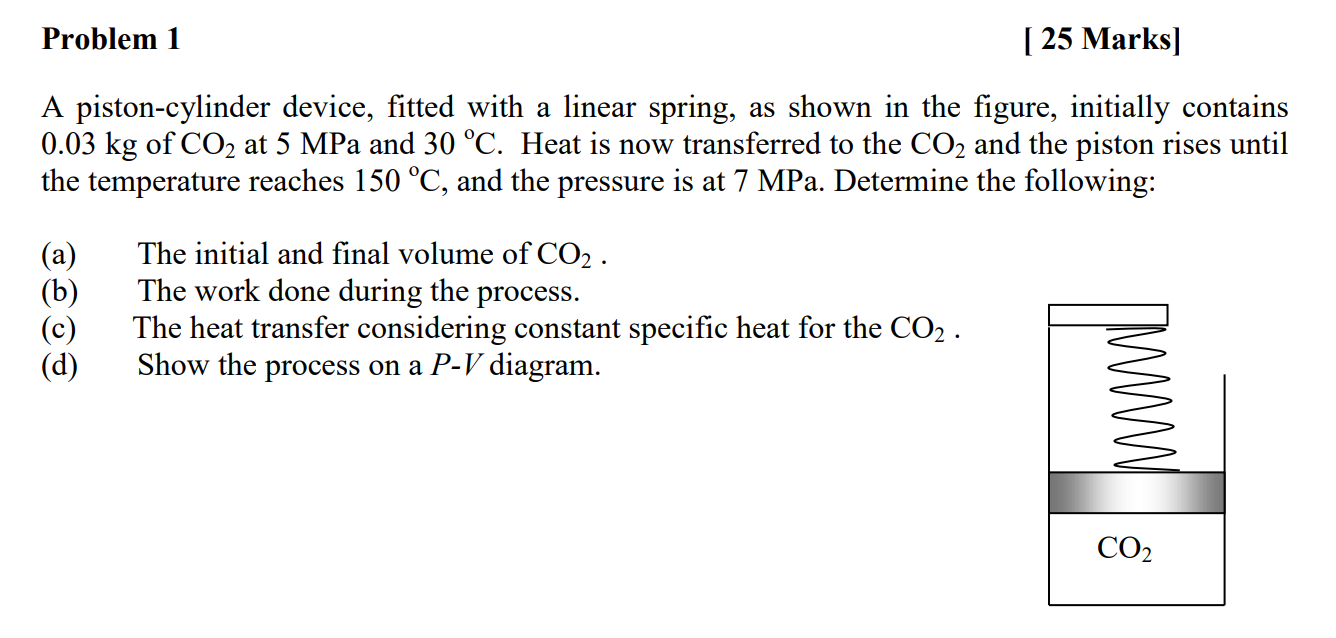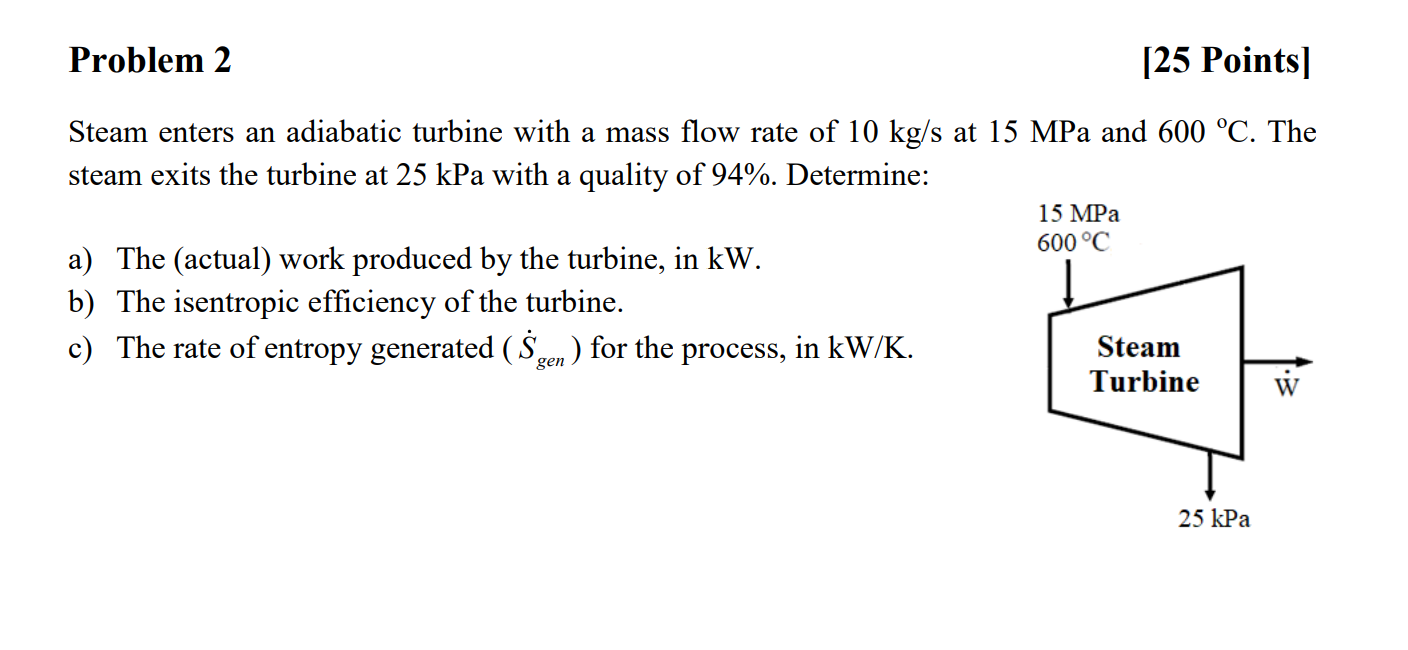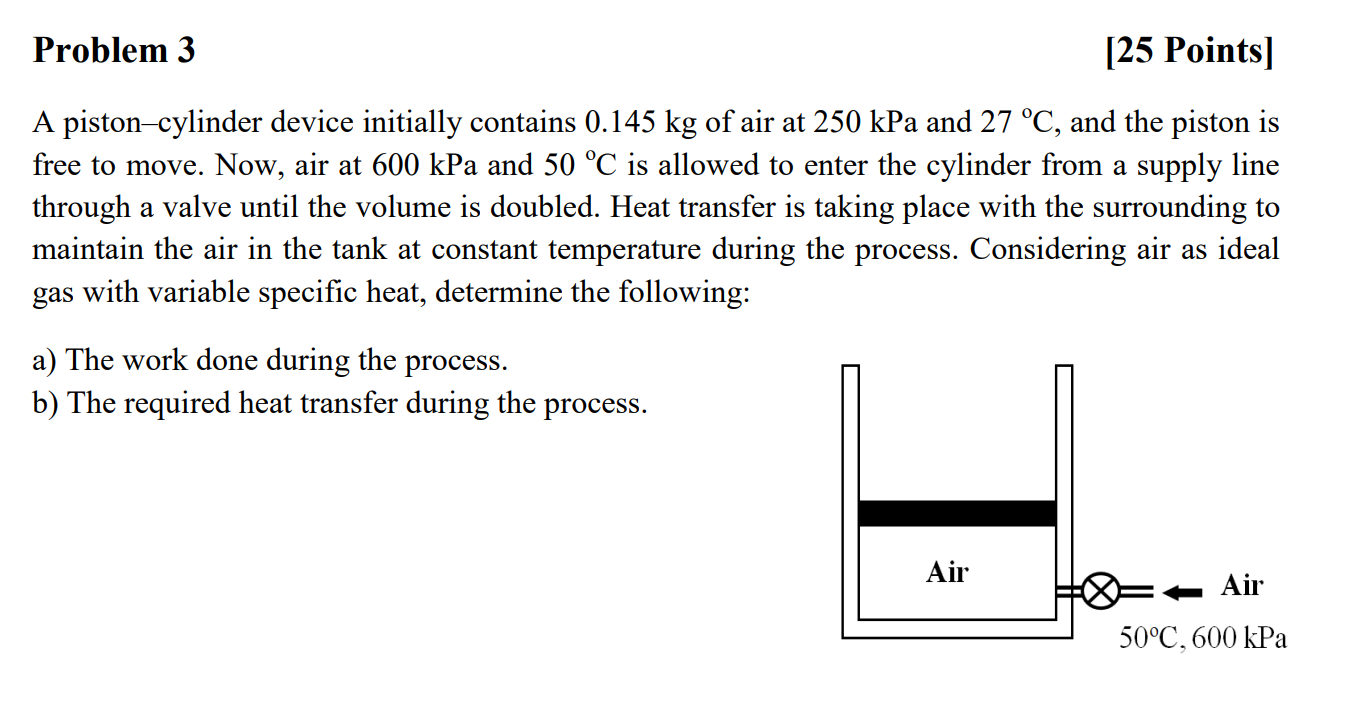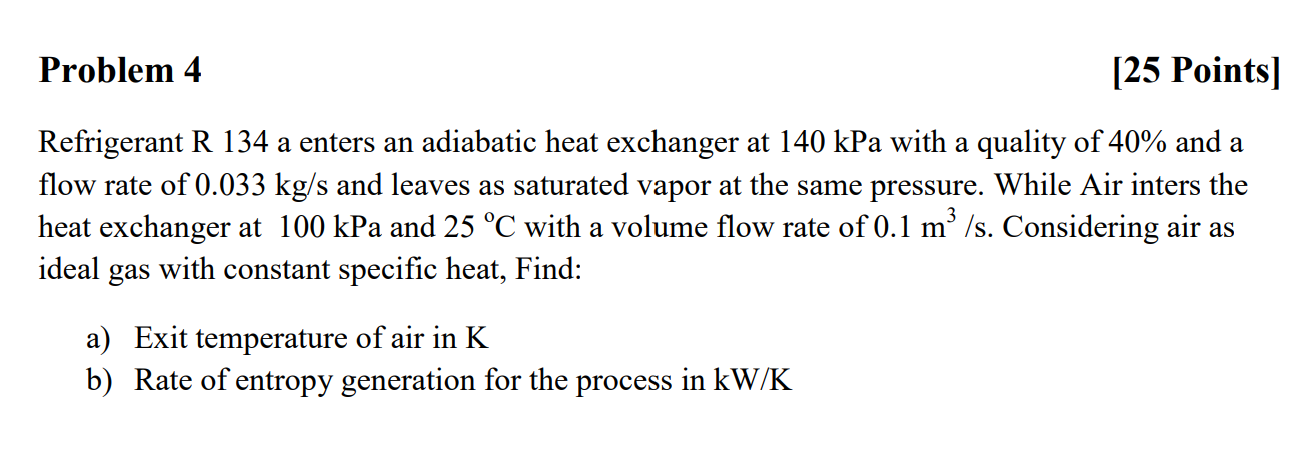Home /
Expert Answers /
Mechanical Engineering /
a-piston-cylinder-device-fitted-with-a-linear-spring-as-shown-in-the-pa665
(Solved): A piston-cylinder device, fitted with a linear spring, as shown in the ...




A piston-cylinder device, fitted with a linear spring, as shown in the figure, initially contains \\( 0.03 \\mathrm{~kg} \\) of \\( \\mathrm{CO}_{2} \\) at \\( 5 \\mathrm{MPa} \\) and \\( 30^{\\circ} \\mathrm{C} \\). Heat is now transferred to the \\( \\mathrm{CO}_{2} \\) and the piston rises until the temperature reaches \\( 150{ }^{\\circ} \\mathrm{C} \\), and the pressure is at \\( 7 \\mathrm{MPa} \\). Determine the following: (a) The initial and final volume of \\( \\mathrm{CO}_{2} \\). (b) The work done during the process. (c) The heat transfer considering constant specific heat for the \\( \\mathrm{CO}_{2} \\). (d) Show the process on a \\( P-V \\) diagram.\r\nSteam enters an adiabatic turbine with a mass flow rate of \\( 10 \\mathrm{~kg} / \\mathrm{s} \\) at \\( 15 \\mathrm{MPa} \\) and \\( 600{ }^{\\circ} \\mathrm{C} \\). The steam exits the turbine at \\( 25 \\mathrm{kPa} \\) with a quality of \. Determine:\r\nA piston-cylinder device initially contains \\( 0.145 \\mathrm{~kg} \\) of air at \\( 250 \\mathrm{kPa} \\) and \\( 27^{\\circ} \\mathrm{C} \\), and the piston is free to move. Now, air at \\( 600 \\mathrm{kPa} \\) and \\( 50{ }^{\\circ} \\mathrm{C} \\) is allowed to enter the cylinder from a supply line through a valve until the volume is doubled. Heat transfer is taking place with the surrounding to maintain the air in the tank at constant temperature during the process. Considering air as ideal gas with variable specific heat, determine the following:\r\nRefrigerant R 134 a enters an adiabatic heat exchanger at \\( 140 \\mathrm{kPa} \\) with a quality of \ and a flow rate of \\( 0.033 \\mathrm{~kg} / \\mathrm{s} \\) and leaves as saturated vapor at the same pressure. While Air inters the heat exchanger at \\( 100 \\mathrm{kPa} \\) and \\( 25^{\\circ} \\mathrm{C} \\) with a volume flow rate of \\( 0.1 \\mathrm{~m}^{3} / \\mathrm{s} \\). Considering air as ideal gas with constant specific heat, Find: a) Exit temperature of air in \\( \\mathrm{K} \\) b) Rate of entropy generation for the process in \\( \\mathrm{kW} / \\mathrm{K} \\)
Expert Answer
To solve this problem, we can use the ideal gas law, the equation of state for the linear spring, an...